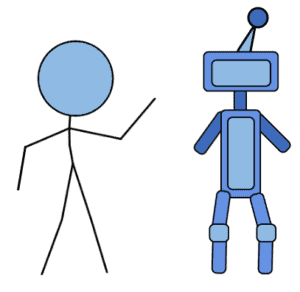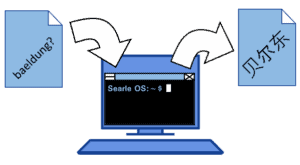1. 引言
在本文中,我们将探讨强人工智能(Strong AI)和弱人工智能(Weak AI)之间的区别。这两个概念在人工智能的科学和哲学文献中被广泛讨论。
在阅读完本文后,你将能够区分科幻作品中的描述与科学或哲学讨论中的观点,并理解这两种人工智能概念的核心差异。
2. 强人工智能与弱人工智能的定义
2.1. 强弱 AI 在大众文化中的表现
在大众文化中,人工智能是一个热门话题。从《终结者》中的天网(Skynet)到阿西莫夫《机器人》系列中的丹尼尔(R. Daneel Olivaw),几乎每部科幻作品都涉及 AI 与人类社会的关系。

这种现象说明,强人工智能与弱人工智能的区分不仅仅是一个技术问题,更是一个社会与哲学议题。
2.2. 科学文献中的定义
随着计算机系统和软件的复杂性增加,AI 与人类社会之间的互动也变得更加复杂。许多期刊如 Information、Frontiers in Psychology 和 Cognitive Systems Research 都探讨了强人工智能与人类社会的交互。

那么,什么是强人工智能?我们为什么需要区分强人工智能与弱人工智能?这正是我们要探讨的问题。
3. 机器能思考吗?
在许多讨论中,无论是大众还是学术领域,人们都在问:未来的人工智能社会会是什么样子?AI 会友善地对待人类吗?还是试图控制我们?它会促进人类智力发展,还是阻碍?
我们可以回答:机器既不能思考也不能感受。程序只能执行它被编写的任务。但问题是:我们真的确定机器无法思考吗?
这正是区分强人工智能和弱人工智能的关键所在。我们要判断 AI 是否能像人类一样思考,以及这种能力是否可能实现。
有两种主要观点:
✅ 一种认为“强”包含“弱”,即 AI 与人类之间可以进行比较。这种观点对应现代对强弱 AI 的区分。
❌ 另一种基于心灵哲学,特别是约翰·塞尔(John Searle)的观点,认为强人工智能必须具备意识和主观体验。
接下来我们将分别讨论这两种观点。
4. 强人工智能比弱人工智能“强”在哪里?
4.1. “强”与“弱”意味着比较
我们可能误以为“强 AI”和“弱 AI”是 AI 系统本身的属性。但其实,这两个术语强调的是比较关系。
⚠️ 重点:强弱 AI 的区别不是 AI 系统之间的比较,而是 AI 与人类在执行某些任务时的表现对比。
4.2. 智能的等级与功能性智能
我们可以认为人类具有“智能”,并且比其他动物更具智能。例如,人类比河狸或啄木鸟更能改变环境。
这说明我们可以对系统(包括生物系统)进行智能等级排序。尽管目前还没有统一的智能衡量标准,但我们可以合理地认为:
- 如果两个系统在所有任务上表现相同,它们的智能等级应视为相同。
- 如果 AI 在某些任务上优于人类,它可能在该任务上被视为“强 AI”。
4.3. 弱 AI 是“强人类”
人类通常在自我评估中认为自己比 AI 更聪明。例如,过去人们认为下棋是人类独有的复杂任务,但如今 AI 已经在象棋和围棋上超越人类。
现在我们转向其他任务,比如玩游戏、驾驶汽车、法律判断等。但随着 AI 的进步,这些任务也可能不再是人类的专属优势。
4.4. 强 AI 是“弱人类”
如果我们认为 AI 在某些任务上表现优于人类,甚至在所有任务上都优于人类,那么它可以被称为强人工智能。
在这种情况下,“强 AI”可以视为“通用人工智能”(General AI)的同义词,“弱 AI”则等同于“专用人工智能”(Narrow AI)。
⚠️ 问题:即便我们能列出所有人类任务,也需要一个衡量标准来判断 AI 是否“更强”。
4.5. 猴子也会看颜色
我们假设一个任务:识别腐烂食物。人类在进化过程中发展出识别新鲜水果的能力,这对生存至关重要。

如今,AI 在图像识别方面可能已经超越人类。如果我们改变人类的进化路径,比如让他们只喝水不吃饭,或只有黑白视觉,那么 AI 在识别腐烂水果上的优势将不再对人类生存有帮助。
这说明:AI 是否“强”,取决于其表现是否对人类生存有益。
4.6. 强 AI 与生存适应性
如果 AI 在影响人类生存的任务上优于人类,那么它在“适应性”上也更强。
⚠️ 重点:这种判断不依赖于主观设定的衡量标准,而是基于自然选择的基本原则。
5. 强人工智能与弱人工智能的本质区别
5.1. 塞尔对强弱 AI 的定义
强人工智能与弱人工智能的现代定义与最初提出时有所不同。
✅ 弱人工智能:AI 系统不具备意识或思维能力。
❌ 强人工智能:AI 系统具备与人类相似的意识或思维能力。
这一观点源于哲学家约翰·塞尔的“中文房间”思想实验。

在这个实验中,一个不懂中文的人通过一本规则手册回答中文问题。如果 AI 也能做到这一点,它是否具有意识?这是强人工智能的核心问题。
5.2. 意识与大脑的关系
这一哲学定义在计算机科学中应用较少,因为科学必须依赖可观测和可计算的现象。
⚠️ 争议:如果我们不接受“身心二元论”,那么“意识”与“大脑活动”的界限就变得模糊。
因此,在讨论强弱 AI 时,更实用的方式是比较它们在具体任务上的表现,而不是假设它们是否具有主观意识。
6. 总结
在本文中,我们探讨了强人工智能与弱人工智能之间的核心区别:
- 强人工智能:具备人类水平的意识或思维能力(哲学定义)或在所有任务上超越人类(工程定义)。
- 弱人工智能:只能在特定任务上表现良好,不具备意识或通用智能。
两种观点各有侧重:
- ✅ 工程视角:强 AI 是在所有任务上都能胜任的 AI。
- ❌ 哲学视角:强 AI 是具备主观意识的 AI。
在实际应用中,我们更倾向于使用工程视角来判断 AI 的“强弱”,因为它更可衡量、更具操作性。